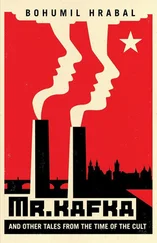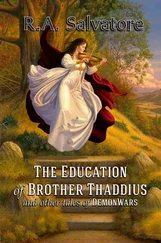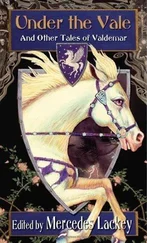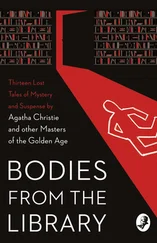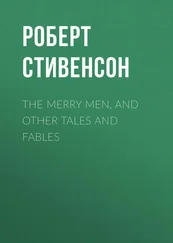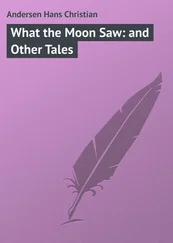DOVER HORROR CLASSICS
THIRTY HOURS
WITH A
CORPSE
AND OTHER TALES OF THE GRAND GUIGNOL
MAURICE LEVEL
INTRODUCED AND EDITED BY
S. T. JOSHI
MAURICE LEVEL (1875–1926) is the forgotten man of French literature. Although he published thirteen novels, dozens of plays, and hundreds of short stories, and was a star contributor to the celebrated Grand Guignol Theatre in Paris, Level today is virtually unknown. He does not appear in any English-language dictionaries or encyclopedias of French literature—and, incredibly, does not appear even in multivolume and presumably authoritative French encyclopedias of French literature. Not a single article has been published about him in an academic journal, and the most basic features of his life are unknown. All we have is his work.
And yet, Level enjoyed remarkable popularity in the English-speaking world during the second and third decades of the twentieth century, when two novels, The Grip of Fear (1911) and Those Who Return (1923), were translated, along with a volume of short stories, first published in England as Crises (1920) and, later that same year, in the United States as Tales of Mystery and Horror. (To add to the oddity, Level’s stories never appeared in a collection in French.) In 1921, H. P. Lovecraft, who admitted that he had not yet read any of Level’s work, wrote a paean to him based solely upon his increasing reputation:
Nay, I have never read a tale of M. Maurice’s, but have yearned to do so ever since beholding the announcement of his book of tales in the reviews a year or so ago…. For M. Level I have only the respect most profound—I would that I could create plots as delicious as his! How relieving it is to fly from the pitiful commonplaces of futile, trivial, superficial, ethics-mad, mockimportant, sentimental, romantic, false-idea’d, American nambypamby Sunday-school tales, to something that actually digs under the illusory surface of conventional values & feigned motives, & shakes the real fibres of the human animal! [1] H. P. Lovecraft to Myrta Alice Little (17 May 1921); Lovecraft Studies No. 26 (Spring 1992): 28–29.
Lovecraft goes on here at much greater length, but this should suffice to suggest what an impression Level’s mere reputation made on an artist so sensitive to the weird, terrible, and unconventional as Lovecraft.
In “Supernatural Horror in Literature” (1927), Lovecraft’s response is somewhat more subdued. In discussing the conte cruel (“cruel tale”), “in which the wrenching of the emotions is accomplished through dramatic tantalisations, frustrations, and gruesome physical horrors,” he goes on to write: “Almost wholly devoted to this form is the living writer Maurice Level, whose very brief episodes have lent themselves so readily to theatrical adaptation in the ‘thrillers’ of the Grand Guignol.” [2] The Annotated Supernatural Horror in Literature, ed. S. T. Joshi (New York: Hippocampus Press, 2012), p. 53.
The overriding fact that Level avoided the supernatural altogether in his work necessitated such a response, for Lovecraft had considerable doubts as to whether nonsupernatural horror, however “gruesome” or extreme, could ever be a legitimate branch of the “weird tale.”
As mentioned, we know next to nothing of Level’s life, except that he studied medicine for a time—a point that becomes evident in a number of his tales. It is unclear when he first became associated with the Grand Guignol Theatre, but his earliest published play appears to date to 1906. The history of the Grand Guignol Theatre has now been charted in a number of volumes, [3] See Mel Gordon, The Grand Guignol: Theatre of Fear and Terror (New York: Amok Press, 1988); Richard J. Hand and Michael Wilson, Grand-Guignol: The French Theatre of Horror (Exeter, UK: University of Exeter Press, 2002). The latter volume contains new translations of Level’s Sous la lumière rouge (as In the Darkroom) and Le Baiser dans la nuit (as The Final Kiss).
and from them we learn much that is of indirect interest to the study of Level and his work. The theatre was founded in 1897 by Oscar Méténier but was taken over two years later by Max Maurey. In spite of its reputation for focusing on death, madness, and eroticism, an average evening’s program at the theatre usually included a comedy. (None of the Level stories that have been translated into English are comedies except, perhaps, a single example, “The Appalling Gift.”) Otherwise, the program almost exclusively featured one-act plays, exactly of the sort suited to the intense, tightly constructed plots we find in Level’s stories. The theatre’s heyday chiefly occurred in the decade or two after World War I, but it declined in the 1930s, especially with the advent of talkies and of horror films; but it continued for decades, not shutting its doors until 1962.
Level was not the most prolific contributor to the Grand Guignol; that honor goes to André de Lorde, whose overall output includes more than 150 plays, novels, and other work. But Level’s plays were among the theatre’s biggest hits; one of them was Sous la lumière rouge (based on the story translated into English as “In the Light of the Red Lamp”), which premiered in 1911, while Le Baiser dans la nuit (based on the story “The Last Kiss”) premiered the next year. It would appear that Level wrote his stories first, publishing them in magazines and newspapers (especially the Paris paper Le Journal), then adapted them into plays, sometimes with the help of a collaborator. So far as can be ascertained, only eight of his plays were actually published. One of them, Lady Madeline (1908), is of interest in being a stage adaptation of Poe’s “The Fall of the House of Usher.”
It is difficult to characterize Level’s work, save to say that its relentless emphasis on crime, hate, vengeance, and their psychological effects constitutes his distinctive contribution to literature. This is the focus of the early novel L’Épouvante (1908), translated as The Grip of Fear, although its title simply means “terror” or “fright.” In this work, a journalist, having stumbled upon an undetected murder, deliberately plants evidence implicating himself as the perpetrator of the crime, merely to experience the thrill of being hunted by the police. The journalist, Onesimus Coche, always imagines that he can reveal the truth to the police if matters go too far; but he finds that his emotions get the better of him as the noose tightens figuratively around his neck. He begins to crack under the strain, and it is said of him toward the end: “From the very start Coche had but one enemy: his own imagination.”
But accomplished as this novel is, Level’s reputation will probably rest on his tales, which if nothing else have all the compactness and “unity of effect” that Edgar Allan Poe believed was the signature feature of the short story. Level’s immediate literary influences in this regard were probably Guy de Maupassant (who is cited in Those Who Return) and Villiers de l’Isle-Adam, a master of the conte cruel, whose work preceded Level’s by a few decades; but these two writers themselves drew extensively upon the structural perfection of Poe’s short stories as models for their own work, and Level manifestly did so as well. Without a wasted word, Level’s tales progress from the first scene to the last in a manner that fully exhibits the conflict of emotions that is at their heart, but without the digressions and irrelevancies that often mar even the most accomplished of novels. Level’s tales reveal such an economy of means that nothing could be added to or extracted from them without destroying their very fabric.
Читать дальше

